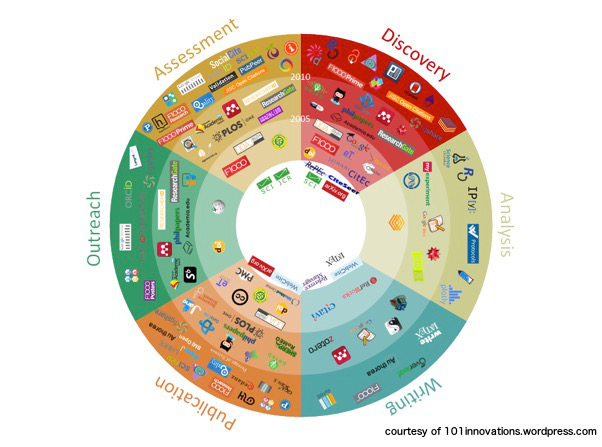Considerations for choosing collaborative software: 5 is the magic number
Posted on 11 February 2016
Considerations for choosing collaborative software: 5 is the magic number
 A fast speed blog from the Fellows 2016 inaugural meeting.
A fast speed blog from the Fellows 2016 inaugural meeting.
by Craig MacLachlan (Met Office), Terhi Nurmikko-Fuller (University of Oxford), David Pérez-Suárez (University College London), Heather Ford (University of Leeds)
How do researchers in an interdisciplinary environment, with different skills and experiences pick collaborative tools that best fit their needs? There are literally hundred's of choices[1], thus we set out a list of 5 considerations to help you.
Documentation. High quality documentation and tutorials can really improve user experience and buy-in from users. Nobody wants to use a tool that is poorly documented or spend time trawling for answers to problems.
Data restrictions and security. Groups or institutes involved in the collaboration may have existing data storage rules, for example prohibiting data storage on cloud platforms. The sensitivity of the data may also prohibit the use of some tools. A recent blog post highlighted a tool for sharing sensitive data (Enabling analysis of sensitive data).
Community. Some tools may have existing users in your team or discipline. Familiarity with a tool can allow people to get on with doing the work! It may even have features specific to your domain.
Perceived level of difficulty. Usability of software is obviously key, however the potential user’s perception of the complexity can be a major barrier to adoption.
Time availability. Quick and dirty is sometimes OK. You might not have the amount of time required to set up and persuade everybody to use the latest and greatest tool. On the flip side, if you are planning a longer project then take your time and choose carefully; you could be stuck with the choice for a long time!
Selecting a tool for a collaborative project can be difficult given the variety of options. Choosing well can make communication of information (a key part of collaboration) much easier. These points are worth considering next time you have to choose a tool.
References
[1] 101innovations.wordpress.com




